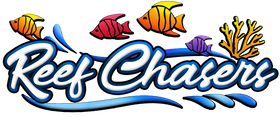| Tailspot Blenny |
| CARE LEVEL | TEMPERAMENT | DIET |
REEF SAFE |
| Intermediate | Peaceful | Herbivore |
Yes |
| PURCHASE SIZE | MAX SIZE |
ORIGIN |
TANK SIZE |
| 1.5-2" | 4" |
Fiji, Indo Pacific | 30g |
| SG |
TEMPERATURE |
dKH |
pH |
| 1.020-1.025 | 72-78F |
8-12 |
8.1-8.4 |
|
View Marine Fish Compatibility Chart The tailspot blenny (Ecsenius stigmatura) is a small, vibrant marine fish known for its distinctive tail spot and playful personality. It typically reaches a maximum length of around 2.5 inches (6 cm), making it a perfect addition to smaller saltwater aquariums. The body of the tailspot blenny is elongated and slender, often showcasing a mix of earthy browns and tans with subtle blue highlights along the dorsal fin and eye region. One of the most striking features of the tailspot blenny is the dark spot located near the base of its tail fin, which serves as a form of mimicry or distraction to potential predators. Its eyes are large and expressive, often giving the fish a curious and endearing appearance. Tailspot blennies are known for their peaceful nature and their utility in a reef aquarium, as they help control algae growth by grazing on it continuously. They thrive in environments with plenty of live rock and hiding spots, allowing them to exhibit their natural behavior of darting in and out of crevices. These fish are relatively easy to care for, requiring standard marine water parameters and a diet that includes a mix of algae-based foods and high-quality marine flakes or pellets. They are generally hardy and can coexist well with other peaceful fish species, making them a popular choice for both novice and experienced aquarists. As with all marine fish, they benefit from a varied diet of vitamin enriched foods consiting of high-quality flake foods, pellets, frozen or live food like brine shrimp, and algae-based preparations. Blennies will also benefit greatly from live phytoplankton which is readily available to them in the wild. |
|
For more information about this species and more visit our Marine Fish Care Blog.
|

